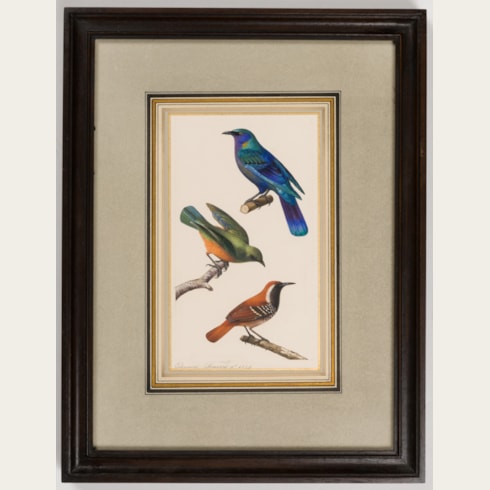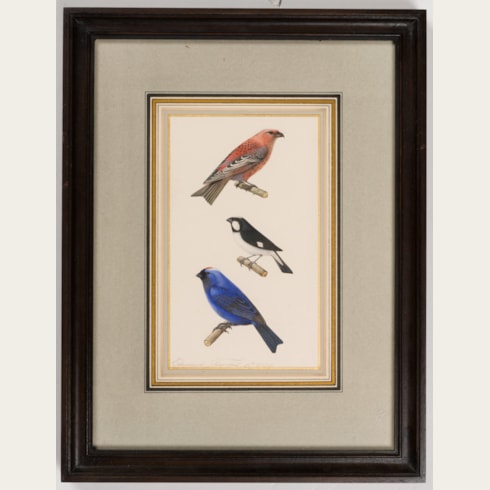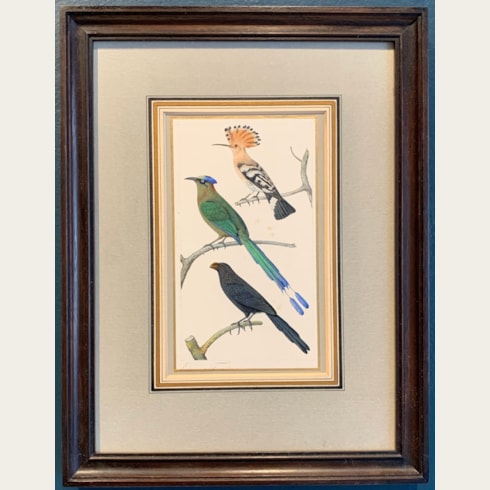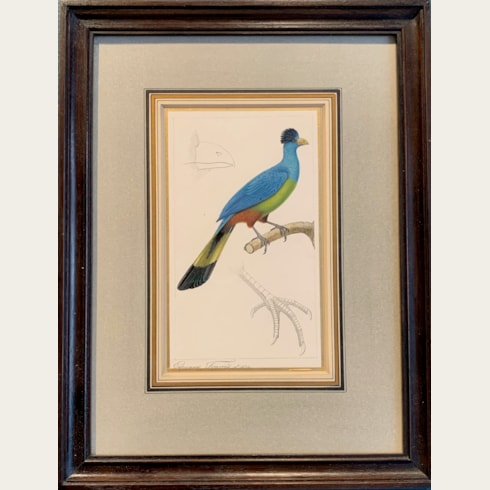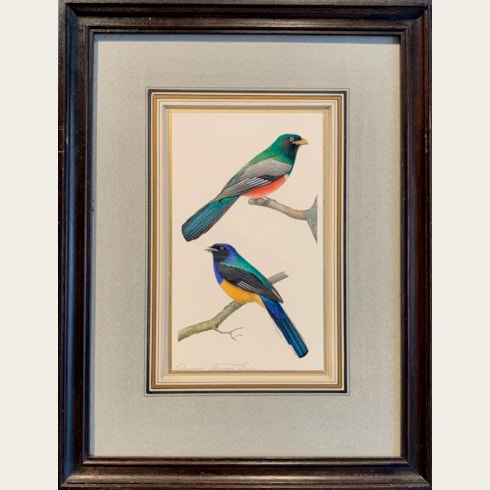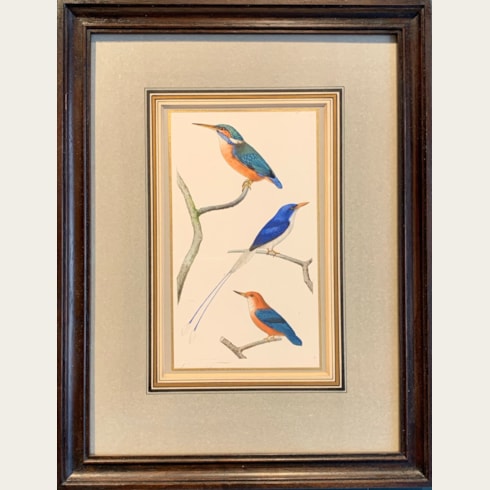Edouard TRAVIES
(Doullens 1809 - Paris 1876)
A Long-Tailed Glossy Starling (Lamprotornis caudatus) and a Common Myna (Acridotheres tristis)
Sold
Watercolour, pen and brown ink and wash, with framing lines in pencil.
Signed Edouard Travies [partially cut off] in the lower margin.
170 x 100 cm. (6 3/4 x 4 in.)
The bird at the top of the sheet has been identified as a long-tailed glossy starling, with which it has many similarities, including the blue-green feathers and violet tail (with yellow sometimes present) and yellow eyes. However, while the artist has drawn this specimen with a green-coloured head and face, long-tailed glossy starlings have a characteristically black face. These birds are native to Africa, spanning from the west coast in southern Mauritania to the centre of the continent. It is difficult to tell whether this specimen is male or female, since both have similar colourings, however we do know that it is a fully mature glossy starling, as adolescents would be duller and more muted in colour.
The smaller bird drawn on the lower part of the sheet was previously identified as a common myna, though it shares some similarities with the grey-winged blackbird (Turdus boulboul), native to Southeast Asia, including its yellow eyes, orange beak and legs, and light patch on its wing. The white patch on the bird depicted here is quite a bit smaller than the grey-edged wings of the blackbird, however. This particular specimen would be a male blackbird, since females are brown rather than black in colour. These birds are solitary creatures who forage in tropical forests and tend to avoid more populated areas.
Among the finest natural history draughtsmen of the 19th century in France, Edouard Traviès de Villers was a gifted watercolourist and illustrator, and exhibited at the Paris Salons between 1831 and 1866. Best known for his ornithological watercolours, his activity in this field culminated in seventy-nine magnificent illustrations for his book Les oiseaux les plus remarquables par leurs forms et leurs couleurs, published in Paris and London in 1857. Traviès also illustrated other works of natural history, such as Types du règne animal: Buffon en estampes; a work intended for children that appeared in 1864. Traviès was further known for his paintings and watercolours of dead game, depicted hanging from a nail on a wall in a sort of trompe-l’oeil effect; indeed, he was one of the first 19th century French artists to develop this theme, which had been established in the previous century by such artists as Jean-Baptiste Oudry.
These watercolours by Edouard Traviès were once part of the exceptional collection of French ornithological watercolours of the 17th, 18th and 19th centuries assembled in the 1920s and 1930s by the French industrialist and bibliophile Marcel Jeanson (1885-1942). Several of these watercolours were used to illustrate Achille Richard’s Oeuvres complètes de Buffon, published in Paris in 1834, 1838 and 1845.
Provenance
Marcel Jeanson, Paris
Thence by descent until 1988
Jeanson sale, Monaco, Sotheby’s, 16 June 1988, lot 310
Richard J. Schwartz, Upper Nyack, New York and Lyford Cay, Bahamas
Thence by descent until 2017.










